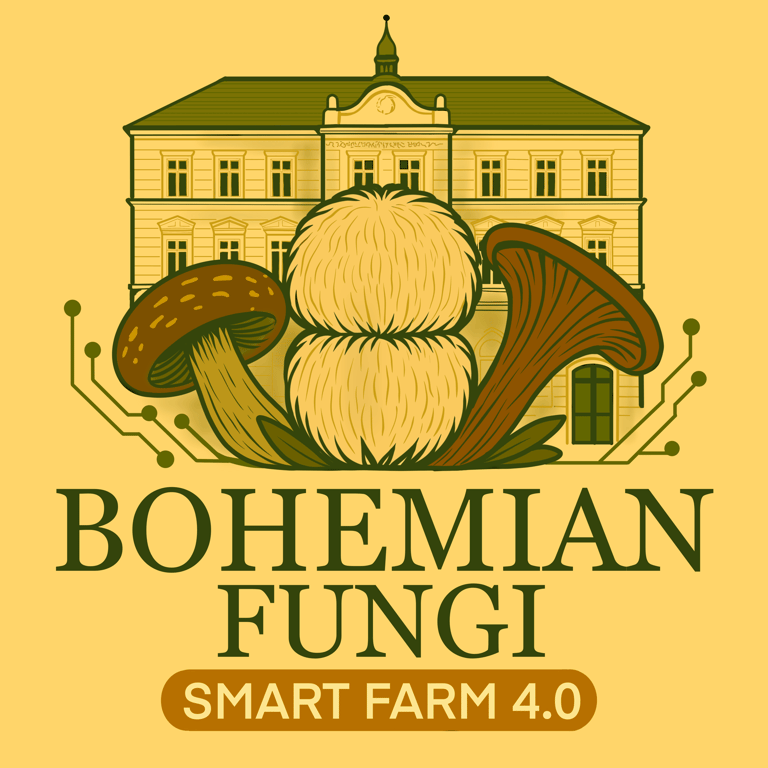Choosing the Right Substrate for Oyster, Shiitake, and Lion’s Mane Mushrooms
Discover the best substrates for growing oyster, shiitake, and Lion’s mane mushrooms. Learn what materials, nutrients, and conditions each species needs to thrive — for both home growers and commercial farms.
MYCOACADEMYMYCOACADEMY- SUBSTRATE
10/20/20252 min read
Introduction
In mushroom cultivation, the substrate is everything. It’s the bed of nutrition that feeds the mycelium — the living network behind every mushroom. Choosing the right substrate can mean the difference between a slow, patchy colonization and a dense, fast-fruiting block full of beautiful mushrooms.
Whether you’re a home grower experimenting in your kitchen or a farm like ours in Prague growing gourmet varieties for local chefs, understanding how each species prefers its substrate will improve both your yield and flavor quality.
Oyster Mushrooms (Pleurotus spp.)
Best substrate: Straw, hardwood sawdust, coffee grounds, soybean hulls
Oyster mushrooms are famous for their adaptability. They can grow on a wide range of materials — from wheat straw to recycled paper — but the most productive substrate blends are pasteurized straw or supplemented sawdust.
Straw substrate recipe: 100% wheat or barley straw, chopped to 2–5 cm pieces, pasteurized in hot water (60–70 °C for 1 hour).
Supplemented sawdust recipe: 80% hardwood sawdust + 20% wheat bran for extra nutrients.
Tips for best results:
Keep substrate moisture around 60–65%.
Pack the substrate loosely to allow airflow.
Incubate at 25 °C until fully colonized.
Flavor impact: Oyster mushrooms grown on straw tend to have a lighter, more delicate taste — while those on hardwood have a deeper, nuttier flavor, preferred by many chefs.
Shiitake Mushrooms (Lentinula edodes)
Best substrate: Hardwood sawdust or logs (oak, beech, hornbeam)
Shiitake are classic wood lovers. They prefer lignin-rich materials, especially oak or beech sawdust, which mimic their natural forest habitat.
Recommended sawdust block mix:
80% oak or beech sawdust + 15% wheat bran + 5% gypsum
Shiitake require sterilized substrates, not pasteurized, because of their long colonization period (8–12 weeks).
Tips for best results:
Maintain incubation at 22–25 °C until the mycelium fully colonizes and browns.
Fruiting typically happens after a “resting” or browning phase of 2–3 weeks.
Flavor impact: Denser hardwood substrates lead to thicker caps and a more intense umami flavor, making them ideal for gourmet cooking.
Lion’s Mane (Hericium erinaceus)
Best substrate: Hardwood sawdust supplemented with bran or soybean hulls
Lion’s Mane is a bit pickier. It thrives on finely ground hardwood sawdust, particularly from beech or maple, mixed with nutrient supplements to speed up growth and enhance yield.
Recommended recipe:
70% hardwood sawdust + 20% soybean hulls + 10% wheat bran
Tips for best results:
Maintain substrate moisture at 60–65%.
Avoid excessive compaction — Lion’s Mane needs good oxygen flow.
Fruiting temperature: 18–21 °C with high humidity (90–95%).
Flavor impact: The cleaner and denser the wood substrate, the firmer the texture and the more delicate, seafood-like flavor — something chefs love when serving it as a vegetarian “scallop.”
Final Thoughts: Matching Substrate to Species
Each mushroom species evolved with unique nutritional needs. By matching substrate composition and preparation to each variety, you’re not just improving yields — you’re enhancing taste, texture, and aroma.
At our Prague mushroom farm, we carefully tailor our substrates using locally sourced hardwood sawdust and organic supplements. This approach helps us maintain consistent quality and sustainability while producing mushrooms with exceptional culinary character.
If you are interested in trying out those amazing mushrooms you can find them here.
And a very interesting review on Wood-Based Substrate for Mushroom Cultivation on this link.
